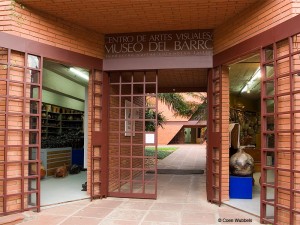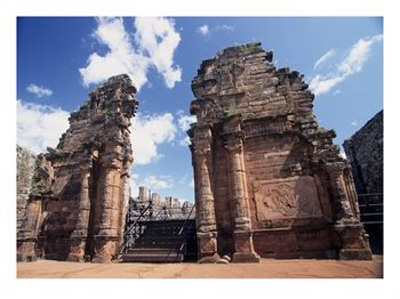 The Museo del Barro is a private museum that was initially established to display some of the unique, contemporary ceramic pieces made in Paraguay. Commonly called the Museum of Clay or Mud, it was established in 1979 and is housed in a modern building not far from City Center in Asuncion.
The Museo del Barro is a private museum that was initially established to display some of the unique, contemporary ceramic pieces made in Paraguay. Commonly called the Museum of Clay or Mud, it was established in 1979 and is housed in a modern building not far from City Center in Asuncion.
Over the years, the advanced innovations with kilns has enabled many of the artisans in Paraguay to develop new and different kinds of sculptural art. Many of these pieces of art can be found at road side vendors all around the area. The museum was seen as an important tool in getting some of these works of art showcased in a gallery style environment.
Aside from the amazing pieces that are on display, the buildings interior itself is very beautiful. It is full of modern glass display cases that are very well lit. And, there is a lot of information on the pieces that are displayed. One section of the museum is set aside for all of the permanent exhibitions. It focuses on the lifestyles of the indigenous natives and pre-Columbian art.
The other section of the Museo de Barro, houses all the temporary exhibitions. Displays can range from plastic art and photography, to contemporary paintings and historical artifacts. But, the museum is most popular for a collection of Guarani ceramics from the pre-colonial era.
There are both historical paintings and paintings done by some of the local artists. The numerous masks that hang on the museums walls serve as proof of how strong Paraguayan’s believe in the popular traditions. Masks like these are worn during the fiestas. And, were also worn by several Guarani tribes during rituals.
The museum also displays some dramatic figures of saints, some that date back to the 16th century and some modern day versions. And, there are several exhibits that showcase the local artisans talent in the craft of Nanduti, more commonly known as spider web needlework.
Visitors to the museum can get a unique glimpse into the lives of Paraguay’s native people. Many of these crafts have been handed down from generation to generation and are a tribute to the talent, skill and pride in their work that the Paraguayan artisans have.

{ 0 comments… add one now }